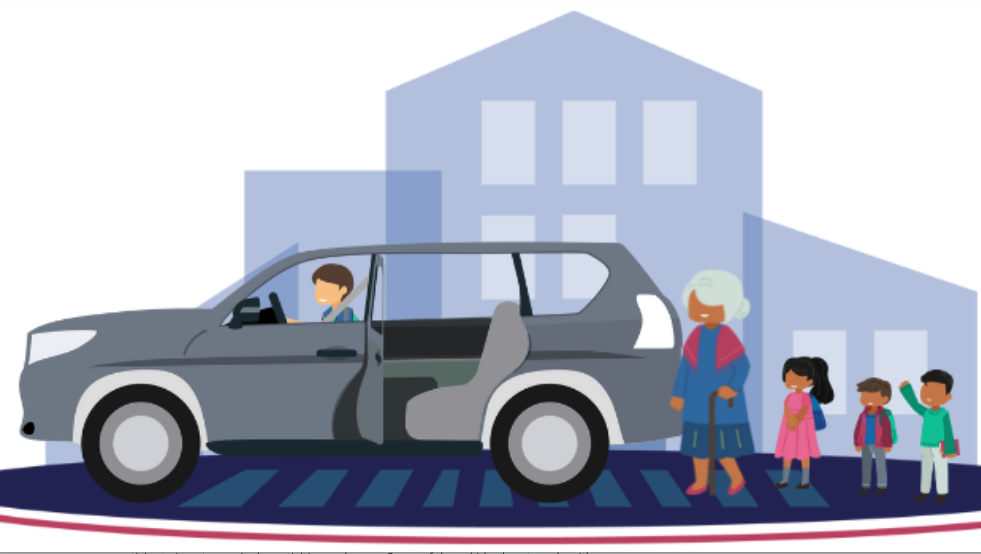Homelessness can have a massive negative effect on the whole child. For these students, school isn’t just a place of learning — it’s where they can count on a full lunch, connect with their friends, access additional services if they need them, participate in extracurricular activities and more. Some of these kids also struggle with high levels of anxiety, stress and even depression, which can lead to emotional and behavioral challenges in the classroom, malnutrition, alcohol and drug use, and bullying.

According to the National Center for Homeless Education, as many as 37% of students experiencing homelessness are chronically absent. However, Megan Carey, the chief development officer of EverDriven, an alternative transportation company, points to research indicating that when such students aren’t chronically absent or don’t transfer schools midyear, they actually graduate at similar rates to their peers.
“That would suggest, then, that when we solve for school stability, we can really make a real difference. When these kiddos have a safe, regular ride to school, they now have three things that are consistent and dependable in their lives: a good meal every weekday, a free education and reliable access to the wealth of resources and supports a school and district can provide for them,” Carey says.
We spoke with Carey to bring a deeper understanding of this issue with education leaders.
Question: Students experiencing homelessness often need to move to different shelters, which can create transportation and routing issues, especially given the current bus driver shortage. How can a district best handle student transportation when this happens so a child doesn’t feel the need to change schools?
Carey: The McKinney-Vento Homeless Assistance Act requires that the school district continue to transport the student to their school of origin, or the school they started the year at, regardless of where the student is living. This is crucial, because research has found that even one non-promotional school move reduces elementary-school achievement in reading and math and increases high-school drop-out rates. One of the best things we can do to support kids experiencing housing insecurity is ensure they don’t need to change schools, even if they are changing homes.
Alternative transportation, which relies on small-capacity vehicles like sedans, minivans and SUVs, is usually the most cost-efficient and effective option available for school districts because trips can be activated rapidly and adjusted based on each student’s unique circumstances.
District staff can request a trip for their students quickly without disrupting current bus schedules. With alternative transportation, students are often one of a much smaller group of riders than the 72 children that can fit on a bus, so it’s also much easier to adjust pickup and drop-off locations quickly if the child moves to a different shelter or finds placement with a foster family.
Q: Let’s talk about policy, specifically the benefits and gaps of the McKinney-Vento Homeless Assistance Act. Do we need to lobby our legislators for additional help or changes regarding the transportation of students experiencing homelessness, and, if so, how?
Carey: The good news is that there are resources available for schools and districts to help families and students experiencing homelessness. Title 1 continues to be the largest federal funding program for students experiencing housing insecurity, and it can be used to provide many services, including transportation. Many school districts have homeless liaisons, or procurement professionals, who know how to apply this funding to meet the needs of their students, which is why it’s key to take a whole child approach. Collaboration between district departments and roles ensures everyone knows what options are available for these kiddos.
Each state has its own unique circumstances, too. We’ve come across states where districts would love to adopt alternative transportation for some of their students, but all the laws in those states define school transportation as being provided by a bus only. Illinois, for example, just last year passed a law clarifying that small-capacity vehicles could be used for school transportation. Simple fixes like these can open up many more opportunities for districts to work creatively to meet the needs of their students.
Q: Stronger connections to a school and community of students can increase graduation rates. Do students experiencing homelessness have transportation options if they want or need to participate in before- or after-school activities, such as extracurricular sports or tutoring?
Carey: Transportation options for before- or after-school activities can vary depending on the community or school district. For districts that are utilizing alternative transportation options, it’s pretty simple to adjust drop-off or pickup times or locations so students can continue to play sports or attend after-school clubs.
Q: Knowing that the ultimate goal for school districts is making sure all students graduate, can parents and the community play a role in the safe, seamless transportation of students without a permanent address? What do you want educators and community members to know — or understand better — about students experiencing homelessness?
Carey: Kiddos experiencing homelessness face a lot of different challenges beyond just housing instability. Understanding the nature of these challenges, including the transportation barriers, is crucial for providing effective support. One-size-fits-all solutions might not work. Flexibility and a willingness to adapt to individual needs are essential. For many students in this situation, alternative transportation provides a personalized, reliable ride to school, which not only ensures regular access to education and school-provided meals, but often bridges gaps to academic support, counseling and myriad other available services schools provide.
